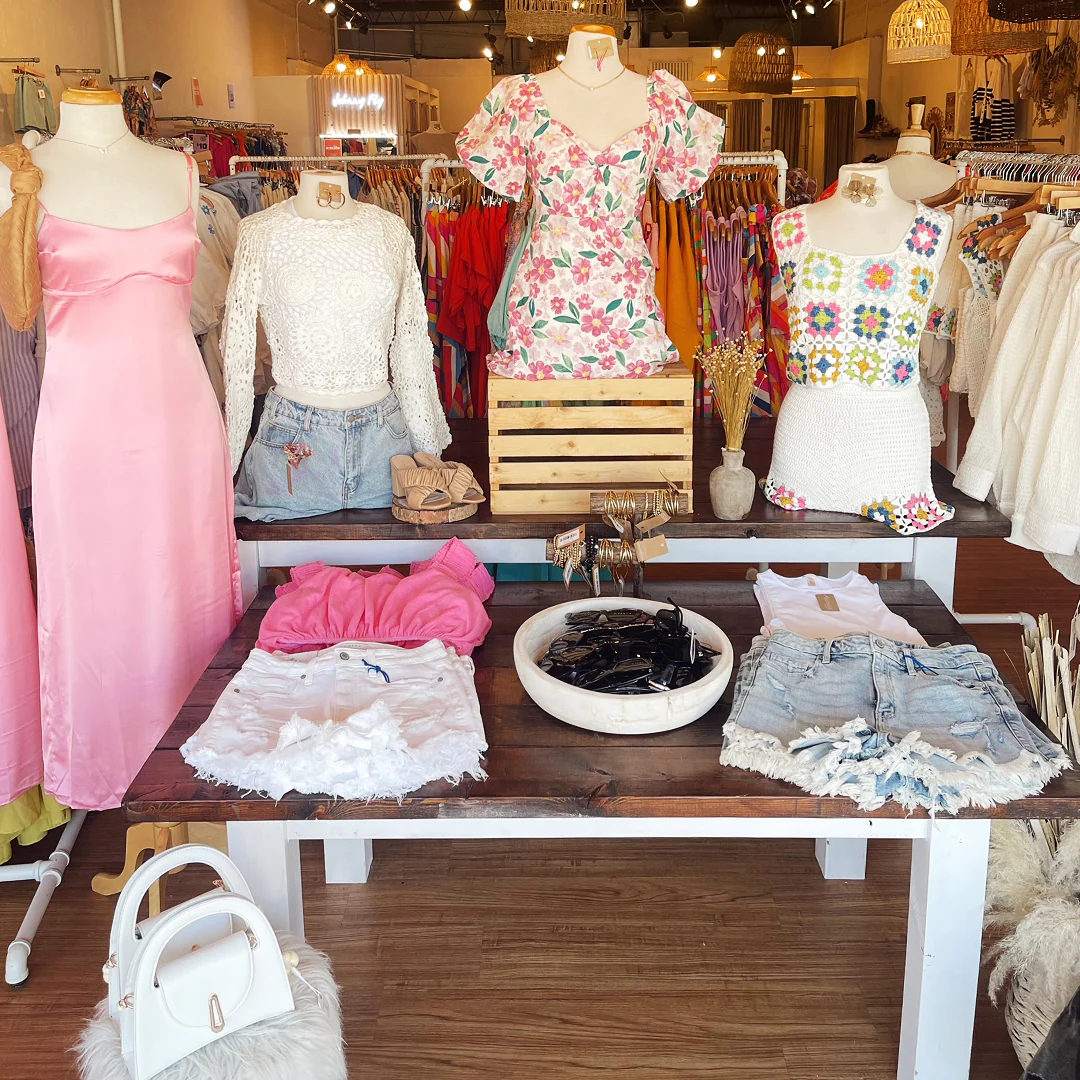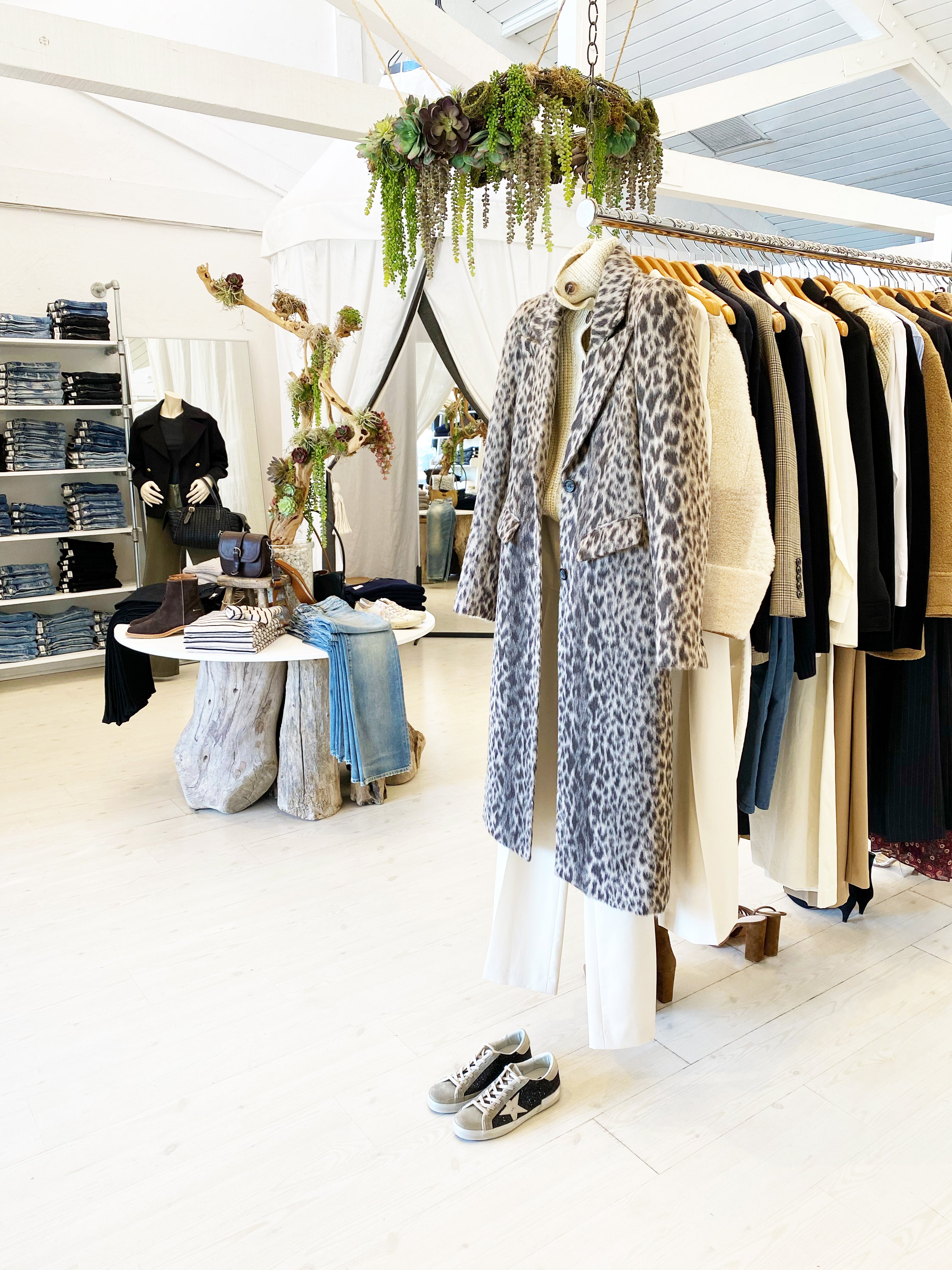Exploring the World of Lasting Boutique Fashion Brands
Exploring the World of Lasting Boutique Fashion Brands
Blog Article
Sustainable Fashion: How Eco-Friendly Garments Is Shaping the Future of Design
As the style industry encounters boosting analysis over its environmental influence, the rise of lasting style uses an appealing alternative that aligns design with environmental obligation. boutique fashion. How does this activity genuinely influence the future trajectory of fashion, and what obstacles exist ahead in its widespread fostering?
Ingenious Sustainable Products
As the fashion sector grapples with its environmental effect, cutting-edge sustainable products have actually emerged as an important solution for decreasing eco-friendly impacts. These materials not only lower dependency on fossil fuels however additionally minimize dangerous chemical usage and water consumption.
Along with plant-based materials, improvements in biofabrication have actually brought about the growth of lab-grown fabrics. Mycelium leather, stemmed from mushroom roots, presents a naturally degradable and functional choice to pet natural leather. Its manufacturing causes substantially reduced carbon exhausts and water use, making it a much more lasting choice for designer seeking to align with environmentally friendly methods.
Recycled materials are likewise getting traction, with polyester made from recycled plastic containers standing for a substantial development. This advancement not only diverts plastic waste from seas and landfills but additionally lowers power intake compared to producing virgin polyester. With each other, these materials underscore the possibility for an extra sustainable garment industry, leading the way for eco aware style and manufacturing.
Eco-Conscious Production
Building on the advancements in lasting materials, the style industry is likewise re-evaluating its production processes to additionally reduce environmental influence. Key techniques consist of minimizing water usage, lowering carbon emissions, and removing dangerous chemicals.
Another essential aspect is the decrease of poisonous chemicals typically utilized in coloring and ending up fabrics. Eco-conscious makers are changing towards plant-based dyes and waterless dyeing innovations, which not just guard local environments yet additionally improve worker safety. Advancements like electronic printing lower textile waste and power consumption, offering a cleaner alternative to conventional techniques.
In addition, openness and traceability have actually come to be paramount. With the advancement of blockchain technology, companies can now offer comprehensive insights into their supply chains, guaranteeing ethical and eco-friendly techniques at each action. This openness develops consumer count on and encourages brands to maintain high sustainability criteria. As the need for eco-conscious items grows, producers are obliged to innovate, ensuring that the future of style is both sustainable and stylish.
The Increase of Upcycling
Upcycling, a transformative practice in lasting style, includes creatively repurposing thrown out materials right into new, top quality items. This ingenious approach not just reduces waste yet likewise diminishes the demand for resources, consequently reducing the ecological impact of apparel production. By reconstructing and reimagining existing things, designers and style brand names are able to instill originality into their collections while advertising environmental obligation.

Additionally, the upcycling motion has empowered independent developers and small businesses, that commonly lead in development due to their dexterity and creative thinking. By utilizing on the plentiful availability of extra materials, these entities add to a round economic climate, demonstrating that style can be both lasting and trendy. Through upcycling, the market takes significant strides in the direction of a much more responsible and mindful future.
Thrift Society's Effect
The burgeoning second hand culture dramatically reshapes the landscape of lasting fashion, stressing the value of mindful usage. This cultural shift urges consumers to welcome used apparel, thus reducing the demand for brand-new garment production and lessening environmental effect. Second hand shopping not just expands the lifecycle of clothes yet also reduces the carbon impact connected with production, transferring, and taking care of apparel.
A crucial aspect of thrift society is its democratization of style. By offering a large array of designs from different periods at cost effective prices, thrift stores make style obtainable go to this site to a wider audience. This availability cultivates a sense of individuality and imagination, as customers mix and suit unique pieces to curate customized closets without adding to the rapid style cycle.
Moreover, thrift culture promotes circularity in vogue, lining up with the concepts of a round economic situation. By recirculating garments, the cycle of waste is interfered with, and sources are preserved. This practice supports a change from a straight "take-make-dispose" model to a more sustainable structure. As even more developers and customers accept second hand culture, the fashion business is obliged to adapt, integrating lasting techniques to fulfill the expanding need for eco-conscious options.

Future Trends in vogue
Fashion's advancement is progressively shaped by technical innovations and sustainability-driven campaigns. As customers become a lot more ecologically aware, the industry is responding with groundbreaking developments that redefine the future of style. One prominent trend is the increase of electronic fashion, where online garments can be used in enhanced fact environments, dramatically reducing fabric waste. This change not just caters to the digital-savvy customer however likewise lessens the environmental footprint generally related to garment manufacturing.
Furthermore, the integration of blockchain modern technology provides new possibilities in openness and traceability, permitting consumers to validate the sustainability qualifications of their clothing. boutique fashion. This ensures liability in supply chains and advertises ethical sourcing practices. 3D printing is yet one more technology that guarantees to change making processes by enabling on-demand manufacturing, thereby decreasing excess supply and waste
As these modern technologies develop, they are positioned to transform the style landscape, merging design with sustainability. The future of fashion, consequently, lies in a smooth mix click here to find out more of innovation, technology, and ecological obligation.
Conclusion
The transformation of the fashion sector with sustainable methods shows a crucial shift in the direction of ecological accountability. This advancement not only lines up fashion with environmental sustainability but additionally sets a criterion for future patterns concentrated on duty and technology.
As the style industry encounters enhancing analysis over its environmental influence, the increase of sustainable fashion provides a promising option that aligns design with environmental duty.As the fashion sector grapples with its environmental effect, ingenious sustainable materials have actually emerged as an essential solution for reducing ecological footprints. With each other, these materials emphasize the capacity for a much more lasting fashion industry, paving the way for environmentally aware layout and production.
Structure on the developments in sustainable go now materials, the fashion market is additionally re-evaluating its production processes to better decrease environmental effect. boutique fashion.Upcycling, a transformative technique in sustainable style, entails creatively repurposing discarded products into new, top notch items
Report this page